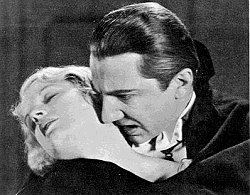| Would you believe that blood is
considered a connective tissue?
 Blood
is a tissue in which highly specialized cells are suspended in a
fluid matrix called plasma. Blood serves to transport many diverse
substances, from gases, nutrients, and wastes to information bearing
molecules such as hormones and antibodies. Histologically, blood is
sometimes classified as a specialized form of connective tissue. In
stained blood smears, one can quickly distinguish between the oxygen
bearing erythrocytes without nuclei and the basophilic, nucleated
leukocytes which perform diverse roles in bodily defense.
Recognition of the cell types, particularly leukocytes, and the
significance of their relative numbers are frequently important in
medical diagnoses. Blood in adults is produced in bone marrow and an
examination of marrow reveals immature forms of the various blood
cells and platelet-producing cells. Blood
is a tissue in which highly specialized cells are suspended in a
fluid matrix called plasma. Blood serves to transport many diverse
substances, from gases, nutrients, and wastes to information bearing
molecules such as hormones and antibodies. Histologically, blood is
sometimes classified as a specialized form of connective tissue. In
stained blood smears, one can quickly distinguish between the oxygen
bearing erythrocytes without nuclei and the basophilic, nucleated
leukocytes which perform diverse roles in bodily defense.
Recognition of the cell types, particularly leukocytes, and the
significance of their relative numbers are frequently important in
medical diagnoses. Blood in adults is produced in bone marrow and an
examination of marrow reveals immature forms of the various blood
cells and platelet-producing cells.
Learning Objectives for this unit:
-
 Understand
that blood is a connective tissue with “formed elements” (cells
and platelets) in a fluid matrix (plasma. Understand
that blood is a connective tissue with “formed elements” (cells
and platelets) in a fluid matrix (plasma.
- Understand the morphology and
function of red blood cells or erythrocytes and the role of the
spectrin membrane skeleton in maintaining their biconcave shape
and flexibility.
- Understand the relative numbers
of the various types of white blood cells or leukocytes in the
blood of normal adults and know the major functions of each
type.
- Understand that all leukocytes
display cell motility and function in secretion, phagocytosis,
etc. primarily in the extracellular matrix of tissues after
migrating across the blood vessel wall (diapedesis).
- Be able to recognize and find
neutrophils, eosinophils, basophils, monocytes, and platelets in
a blood smear.
- Understand and recognize the
compartments and tissues in blood marrow.
- Understand the
developmental
sequence and recognize the intermediate cells in the formation
of red blood cells and the three types of granulocytes.
- Be able to recognize
megakaryocytes and understand how platelets are formed and
released.
Let's go straight to
a blood smear. |